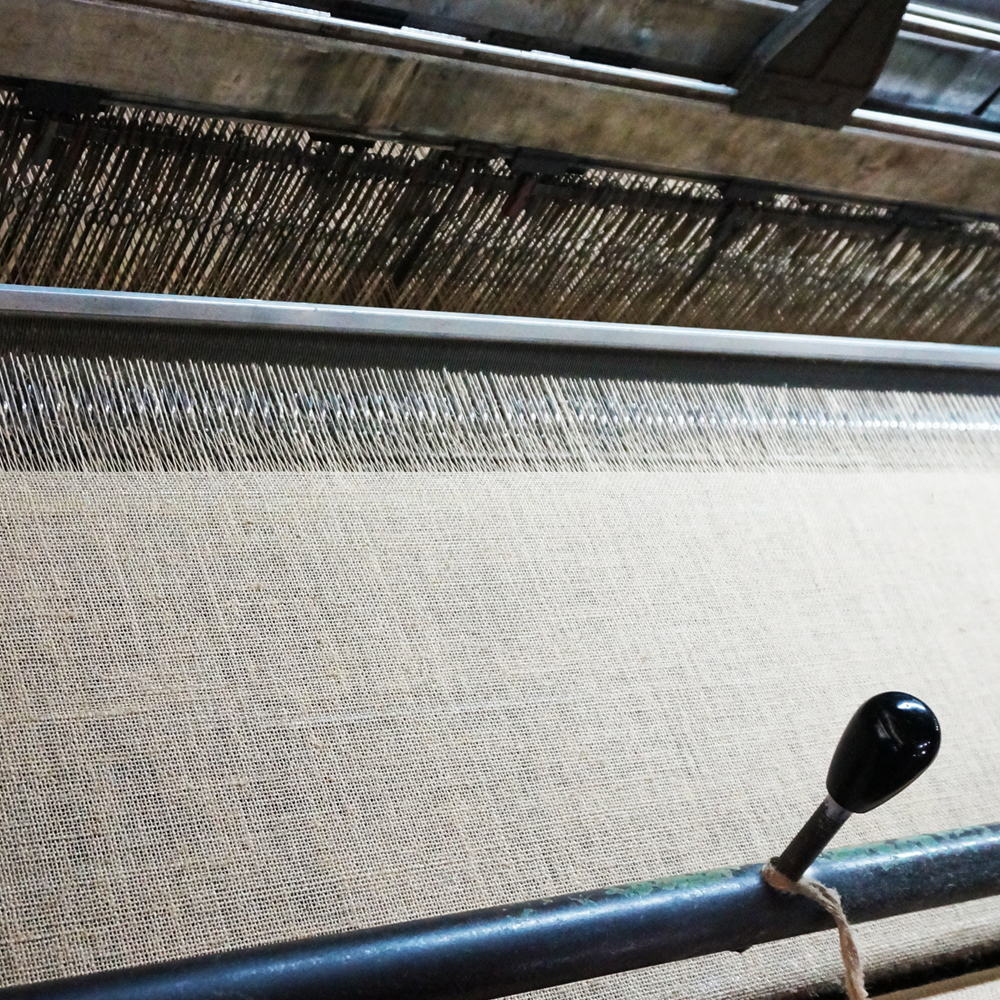
Jute Fibre to Fabric
The fourth stage of the jute bag manufacturing process is where the raw fibre is turned into fabric that can be dyed, stitched and printed
Jute undergoes several essential processes at the jute mill before it can be transformed into a final product, to enhance its quality, durability and aesthetics. The key stages in the jute processing at a mill include selection, softening, carding, spinning, weaving and finally, dyeing.
"This step is crucial as it determines the overall quality of the final jute product"
The first step is the selection of raw jute fibres, whereby they are sorted to ensure uniformity in length and colour, whilst assessing the quality. This step is crucial as it determines the overall quality of the final jute product, and enables the jute to be batched by quality and colour. It is then hand twisted into bundles or ‘heads’.
Next, the jute fibres undergo a softening process by putting them through a softener and spraying with a mixture of oil and water to penetrate the fibres. The combing action of the pins on the carding machine ‘fleeces’ the jute before condensing it into a loose fibre called ‘sliver’.
Carding is the next step in the jute mill process. In this stage, the softened fibres are aligned and cleaned to remove any impurities or irregularities. Carding machines comb and straighten the fibres, creating a continuous web or sliver of jute, which is then ready for the spinning process.
Spinning is the process of twisting the carded jute fibres to form yarn. This step is crucial in determining the strength and texture of the final jute product. The resulting jute yarn can be of various thicknesses and is then wound onto spools for further use in the weaving process.
Weaving is the stage where jute yarn is transformed into fabric. Different types of looms are employed to interlace the yarns into a structured pattern, creating jute cloth. The weaving process contributes to the final appearance and texture of the jute product, whether it be a sack, mat, or bag.
Finally, the last process the jute undergoes at the mill is dyeing. Dyeing is performed using water-based, eco-friendly and fade-resistant inks to impart the pantone colour of your choice to the jute fabric.
See the jute bag manufacturing process as a whole, or use the button below to read more about the next stage of the process.



